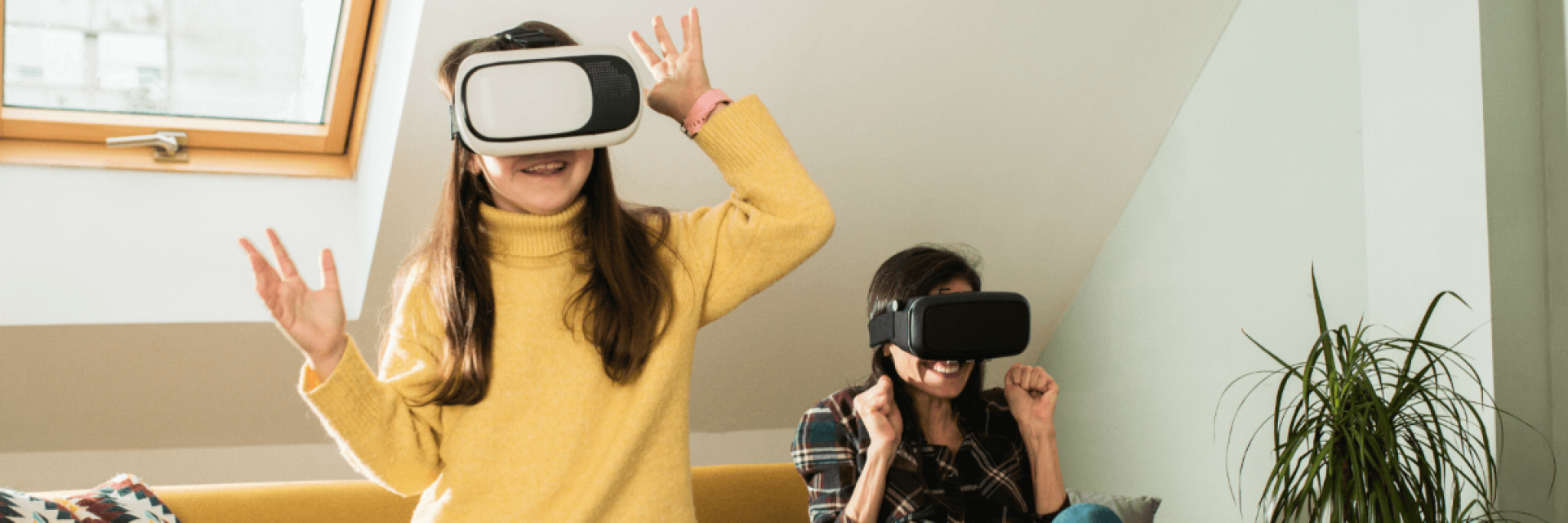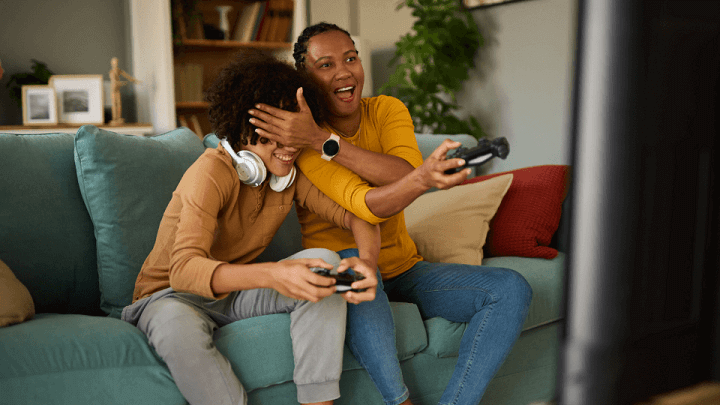We've partnered with The Telegraph to create a series of articles designed to help you embrace connectivity and use tech for good.
Six things to consider when choosing tech for your family - and how to make it safer

We've partnered with The Telegraph to create a series of articles designed to help you embrace connectivity and use tech for good.
When was the last time you did something just for the sheer joy of it? When you were fully focused, utterly in the moment and just having fun? As adults, our time is often scheduled into regimented segments with ‘play’ so far down the priority list it often drops off. And yet—for our mental, physical, social and creative health—that needs to change.
“Play is ‘focused attention that is fun’,” says Emma Worrollo, founder of Playful Den, the play specialist consultancy and Gen Alpha experts. “Anything you’re doing where you're concentrating and there’s a challenge, but it’s not stressful. You’ve lost a sense of time and you feel good about it."
“As psychology researcher and play scholar Dr Peter Gray says, play has to be intrinsically motivated: no one can force you to play. But the big thing is: play has no end goal. You’re simply doing it because you’re doing it. And that’s the thing that adults really struggle with that kids are brilliant at. Kids live in the moment and are happy to do things just for the sake of it. But adults, after years of productivity programming, find that very tricky,” explains Worrollo.
Play teaches kids spatial awareness, confidence, social skills, cooperation, curiosity and resilience. As adults, safe in our belief that we have ticked all those boxes, play becomes somewhat relegated. After all, we’re too busy and important to play. And yet most of us do play. Have you ever laughed until you cried at some inadvertent slapstick moment with friends? Do you dance around your house when a great tune comes on? Have you ever felt as if you were flying during a run?
“In my work, I talk about the nuance between play and playfulness,” Worrollo says. “Playfulness is where we might take some of the characteristics of play and apply them to something that is not play, such as chores. Playfulness is built in; it’s human. We all have it. It’s a characteristic that can be built upon and trained. And a lot of adults can find playfulness every single day, perhaps more than they can find play.”
The reason this matters is because biologically, play enhances our neuroplasticity: the brain’s ability to change and adapt to new experiences. “It’s like, ‘Oh! New pathway unlocked!’” Worrollo confirms. “People who play, and are very playful, tend to see more opportunity and be more creative.”
Feeling more creative, inspired and resilient can lead to better stress management. According to Worrollo: “When we play, we tend to be indulging in pressure-free risk-taking. It’s like sending a constant message to yourself: you’re allowed to try this out, you’re allowed to make mistakes, you’re allowed to think differently. Play counteracts perfectionism. We have so much information and research available to us there can be a sense that there is a ‘right’ way to do everything: ‘I should be doing this’. It’s very hard to play when in a state of ‘I should be’ – and also in a state of distraction. And who isn’t distracted nowadays?”

The evolution of digital play has given us more options than ever. “Digital and in real-life play fire up the same part of the brain so are both valid,” Worrollo says. “The only thing you want to be careful with is that you’re actually having fun when online, that it’s not addictive, and that it doesn't come at the sacrifice of tactile play, particularly for children. But digital play can be a brilliant way to create moments of gathering with others.”
Digital safety when playing online can be a concern for parents which is why initiatives such as EE’s new GameSmart are important, allowing both kids and parents to game safely while remaining competitive. “You still need movement and variation though—you need to mix it up,” Worrollo says. “Think of play as a diet where variation is ideal.”

So, how can we all get more play into our lives? Worrollo recommends working out your ‘play personality’. There are six official categorisations according to Dr Stewart Brown, founder of the National Institute for Play. However, deep-diving into them isn’t essential for discovering what will work for you.
“Think about how you used to play as a child versus how you live now,” Worrollo says. “People often say, ‘I was really adventurous and loved adrenaline, but now I’m serious and do the same thing every day.’ Or ask yourself, ‘When are the moments I feel most alive?’ What lights you up? What are you doing, where are you, who are you with, what environment are you in? Spending a bit of time around that will help determine what play looks like for you.”
It can then be a simple case of introducing more playfulness into your everyday life. For example, spreading your arms like an aeroplane as you leap down a hill during your next run, joining a book club rather than reading alone, limiting distractions so you can fully focus on fun (for example, by pausing the WiFi to certain devices—a new option from EE), going out dancing rather than only dancing while washing up, or making something for the sake of it rather than there always having have a point to it.
“An adult goes, ‘Okay, I’m going to do a bit of art’, then immediately thinks, ‘But what am I drawing, what’s it for, why am I doing it?’ They may find it hard to create something that’s just about colours, shapes, thinking and feeling,” Worrollo says. “But the more you activate playfulness, the easier and more accessible it becomes.”

EE understands the importance of gaming for both kids and adults—for it to fire up those neural pathways positively it needs to be safe. To that end EE GameSmart is invaluable, rating 50 popular console games according to various criteria, and providing advice on accessibility and family-friendliness. There’s also the Meta Quest 2, an all-in-one VR headset, that will add a whole new dimension to play.
EE’s WiFi Controls will come in useful for anybody looking to cut down on their scrolling time. You can even add content filters, extra parental controls and organise devices into groups. And, when you are ready to log on again, activating 'Game Mode’ prioritises network traffic to ensure fewer lags.